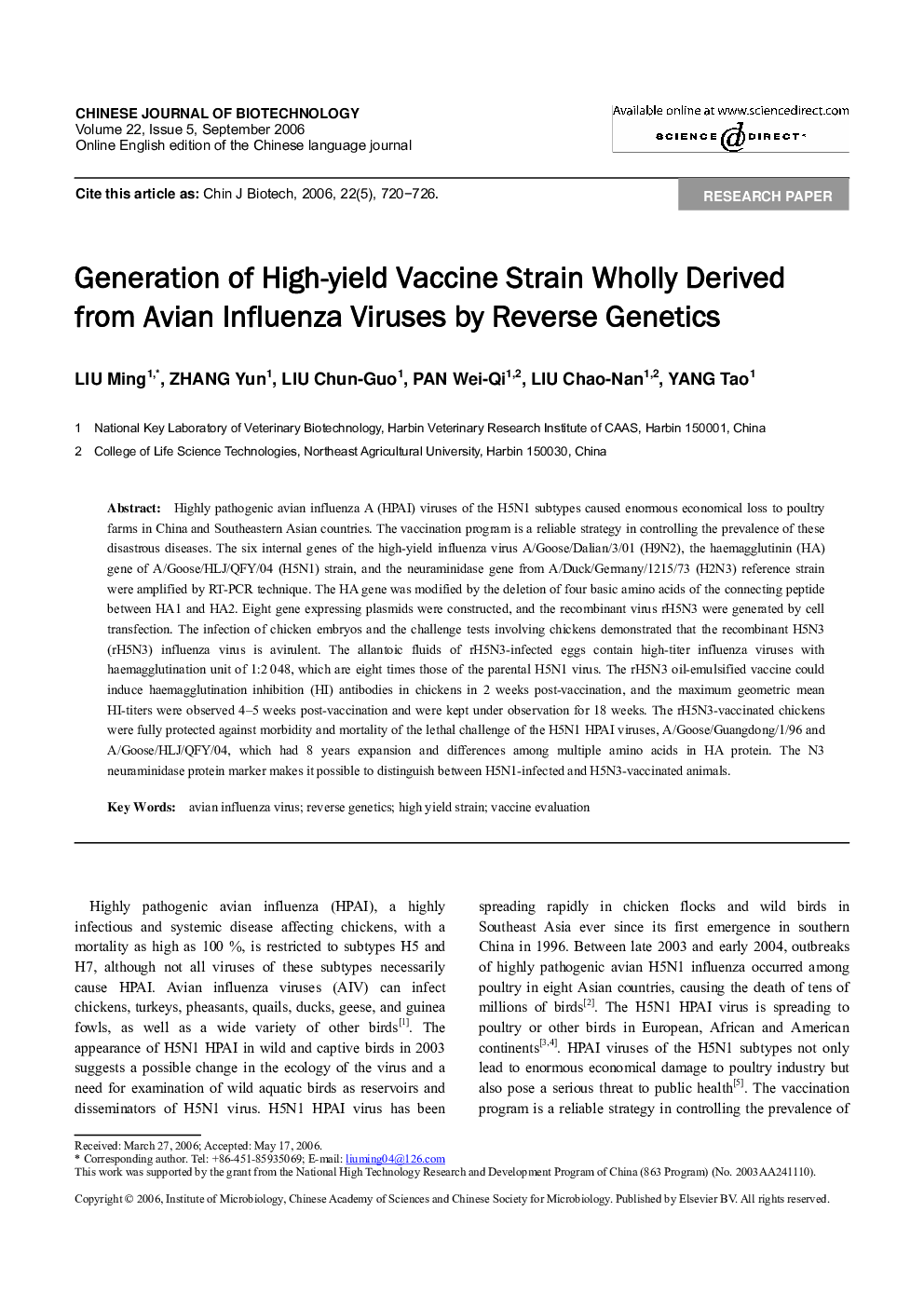| Article ID | Journal | Published Year | Pages | File Type |
|---|---|---|---|---|
| 2079039 | Chinese Journal of Biotechnology | 2006 | 9 Pages |
Abstract
Highly pathogenic avian influenza A (HPAI) viruses of the H5N1 subtypes caused enormous economical loss to poultry farms in China and Southeastern Asian countries. The vaccination program is a reliable strategy in controlling the prevalence of these disastrous diseases. The six internal genes of the high-yield influenza virus A/Goose/Dalian/3/01 (H9N2), the haemagglutinin (HA) gene of A/Goose/HLJ/QFY/04 (H5N1) strain, and the neuraminidase gene from A/Duck/Germany/1215/73 (H2N3) reference strain were amplified by RT-PCR technique. The HA gene was modified by the deletion of four basic amino acids of the connecting peptide between HA1 and HA2. Eight gene expressing plasmids were constructed, and the recombinant virus rH5N3 were generated by cell transfection. The infection of chicken embryos and the challenge tests involving chickens demonstrated that the recombinant H5N3 (rH5N3) influenza virus is avirulent. The allantoic fluids of rH5N3-infected eggs contain high-titer influenza viruses with haemagglutination unit of 1:2 048, which are eight times those of the parental H5N1 virus. The rH5N3 oil-emulsified vaccine could induce haemagglutination inhibition (HI) antibodies in chickens in 2 weeks post-vaccination, and the maximum geometric mean HI-titers were observed 4-5 weeks post-vaccination and were kept under observation for 18 weeks. The rH5N3-vaccinated chickens were fully protected against morbidity and mortality of the lethal challenge of the H5N1 HPAI viruses, A/Goose/Guangdong/1/96 and A/Goose/HLJ/QFY/04, which had 8 years expansion and differences among multiple amino acids in HA protein. The N3 neuraminidase protein marker makes it possible to distinguish between H5N1-infected and H5N3-vaccinated animals.
Related Topics
Life Sciences
Biochemistry, Genetics and Molecular Biology
Biotechnology
Authors
LIU Ming, ZHANG Yun, LIU Chun-Guo, PAN Wei-Qi, LIU Chao-Nan, YANG Tao,
